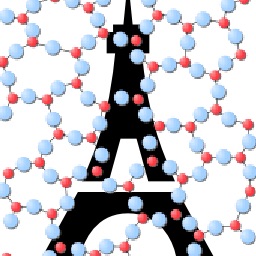Discovery of ultra-crack-resistant oxide glasses with adaptive networks
Despite their transformative role in our society, oxide glasses remain brittle. Although extrinsic postprocessing techniques can partially mitigate this drawback, they come with undesirable side effects. Alternatively, topological engineering offers an attractive option to enhance the intrinsic strength and damage resistance of glass. On the basis of this approach, we report here the discovery of a novel melt-quenched lithium aluminoborate glass featuring the highest crack resistance ever reported for a bulk oxide glass. Relying on combined mechanical and structural characterizations, we demonstrate that this unusual damage resistance originates from a significant self-adaptivity of the local atomic topology under stress, which, based on a selection of various oxide glasses, is shown to control crack resistance. This renders the lithium aluminoborate glass a promising candidate for engineering applications, such as ultrathin, yet ultrastrong, protective screens.
